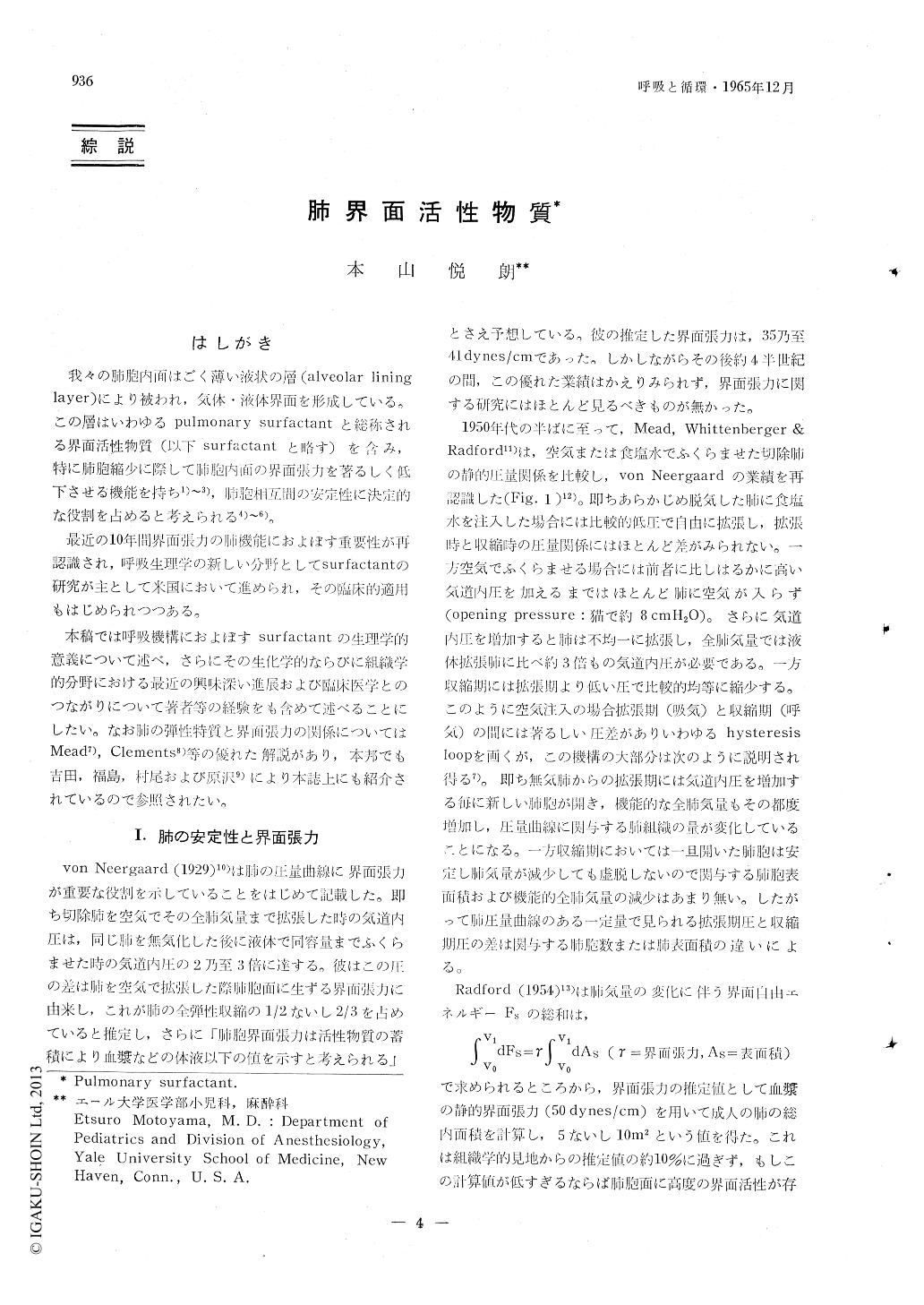Japanese
English
- 有料閲覧
- Abstract 文献概要
- 1ページ目 Look Inside
はしがき
我々の肺胞内面はごく薄い液状の層(alveolar lining layer)により被われ,気体・液体界面を形成している。この層はいわゆるpulmonary surfactantと総称される界面活性物質(以下surfactantと略す)を含み,特に肺胞縮少に際して肺胞内面の界面張力を著るしく低下させる機能を持ち1)〜3),肺胞相互間の安定性に決定的な役割を占めると考えられる4)〜6)。
最近の10年間界面張力の肺機能におよぼす重要性が再認識され,呼吸生理学の新しい分野としてsurfactantの研究が主として米国において進められ,その臨床的適用もはじめられつつある。
Mammalian lungs contain substances termed "pulmonary surfactant"responsible for a re-duction in surface tension of lung extracts to extremely low levels with compression of the surface. Surfactant is presunlably present in the alveolar lining layer and is considered essential for the stabilization of air spaces during breathing.
Alveolar lining layer is composed of lipopro-tein rich in surface active phospholipids such as lecithin and sphingornyelin.
Since the appearance of peculiar surface activity in the lung coincides with the appea-rance of osmiophilic inclusion bodies in Type II alveolar cells and osmiophilic alveolar lin-ing layer during gestation, it is considered that the indusion body is the source of pul-monary surfactant.
During shallow breathing with a low dis-tending Pressure surface tension in the nor-mal lung gradually increases and the surface area decreases with eventual atelectasis. Occasional distension of surface area with a deep breath or yawn prcvents this phenome-non.
The loss or inhibition of pulmonary sur-factant results in a decrease in pulmonary compliance and atelectasis as scen in the re-spiratory distress syndrome of the newborn, post-perfusion lung syndrome and severe oxygen poisoning.

Copyright © 1965, Igaku-Shoin Ltd. All rights reserved.


